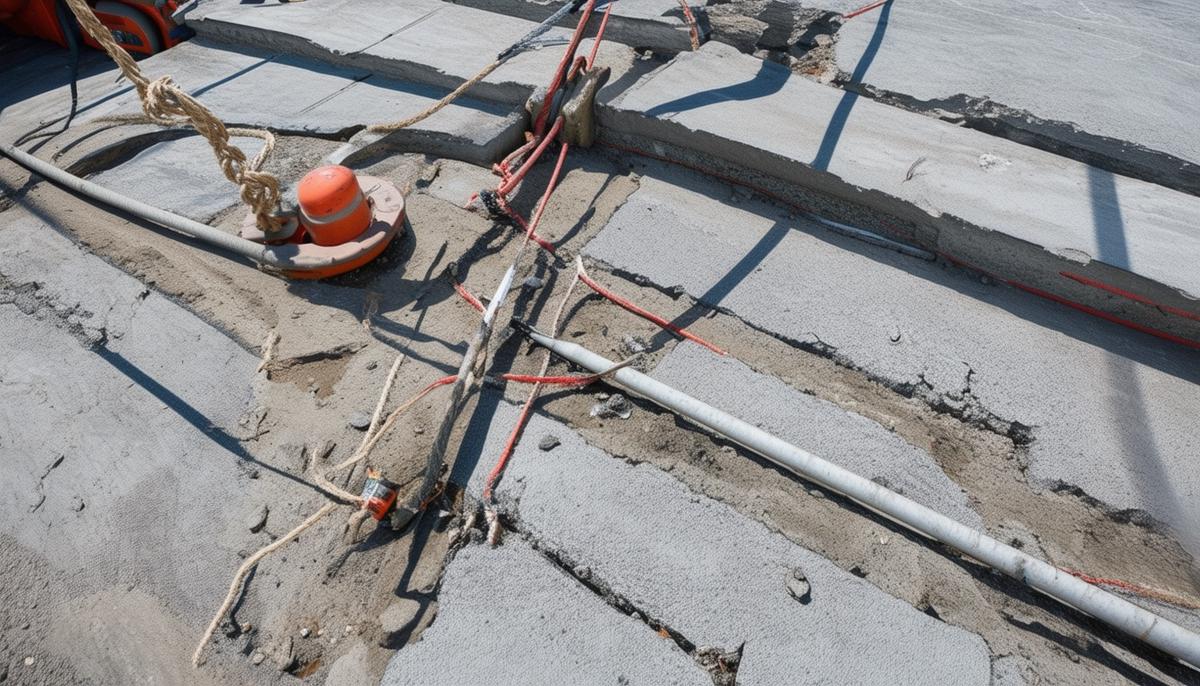Continuous Load Path
Creating a continuous load path from roof to foundation is crucial for storm-resistant structures. Start with hurricane clips connecting roof trusses to walls. Use metal straps to tie wall studs to top and bottom plates, and bolt corners down with heavy-duty hardware.
For the foundation, use J-shaped anchor bolts to secure the sill plate, spacing them about every two feet. Install impact-rated windows with sturdy frames made of reinforced vinyl or aluminum.
Ensure continuity by using tie-downs from top to bottom, securing each segment with metal straps. For the roof, opt for ring-shank nails over common ones to reduce the risk of shingles detaching during high winds.
- Use hurricane clips to connect roof trusses to walls
- Tie wall studs to top and bottom plates with metal straps
- Bolt corners down with heavy-duty hardware
- Secure sill plate to foundation with J-shaped anchor bolts every 2 feet
- Install impact-rated windows with reinforced frames
- Use ring-shank nails for roof shingles

Anchoring Techniques
Proper anchoring is key to a structure's stability. Use anchor bolts to secure sill plates to the foundation, sinking them deep into the concrete. For added security, wrap metal straps over the sill plate and bolt them into the foundation.
Tie wall frames together using hurricane straps between wall studs and both sill and top plates. Consider incorporating plywood sheer panels in wall sections to increase resistance against lateral forces.
Secure roof trusses to top plates with metal straps. Bolt down the edges through metal connectors into the top plate for rigidity. Use angled connection plates to distribute forces evenly, dissipating wind pressures throughout the structure.
"The complete set of prescriptive design provisions in Part 9 of the National Building Code of Canada (NBCC) has not been evaluated against realistic wind loads."

Roof Design Choices
Hip roofs offer better protection against hurricanes compared to traditional gable roofs. Their sloping design on all four sides allows wind to pass over more smoothly, reducing stress on any particular section.
Hip roofs also provide greater structural integrity due to more connections at every corner. This design makes it harder for wind to lift any part of the roof, as force is distributed across multiple surfaces and anchors.
While the choice between hip and gable roofs depends on local conditions and specific building needs, hip roofs are generally a stronger ally in wind-prone areas. When combined with impact-resistant shingles or slate tiles, they significantly enhance a building's resilience against storms.

Material Selection
Choosing the right materials is crucial for hurricane-resistant structures. For exterior walls, consider fiber cement siding. It's durable, fire-resistant, and pest-immune, offering better protection against wind and debris than traditional wood siding.
Install impact-resistant glass windows with reinforced aluminum or vinyl frames. These windows can withstand high impacts without shattering easily, reducing the risk of interior damage during storms.
For foundations, insulated concrete forms (ICF) offer both impact resistance and thermal efficiency. On the roof, use Class 4 impact-resistant shingles mixed with strengthening polymers or thick 3/8-inch slate tiles to fortify against winds and harsh weather.
| Component | Recommended Material |
|---|---|
| Exterior Walls | Fiber cement siding |
| Windows | Impact-resistant glass with reinforced frames |
| Foundation | Insulated concrete forms (ICF) |
| Roof | Class 4 impact-resistant shingles or 3/8-inch slate tiles |
Selecting these durable and resilient materials ensures a structure ready to withstand nature's challenges while providing safety and peace of mind for occupants.
Building with resilience in mind means connecting every part of your structure to stand strong against nature's challenges. From the roof to the foundation, each element plays a vital role in creating a cohesive and sturdy home. By focusing on these connections, you craft a space that remains steadfast and secure, ready to face whatever comes its way.
- Ramseyer C, Holliday L, Floyd R. Enhanced residential building code for tornado safety. Journal of Performance of Constructed Facilities. 2016;30(4):04015084.
- Gavanski E, Kordi B, Kopp GA, Vickery PJ. Wind loads on roof sheathing of houses. Journal of Wind Engineering and Industrial Aerodynamics. 2013;114:106-121.
- Morrison MJ, Kopp GA, Gavanski E, Miller C, Ashton A. Assessment of damage to residential construction from the tornadoes in Vaughan, Ontario, on 20 August 2009. Canadian Journal of Civil Engineering. 2014;41(6):550-558.
